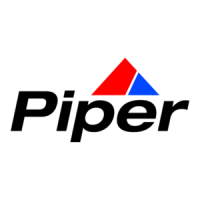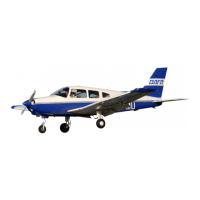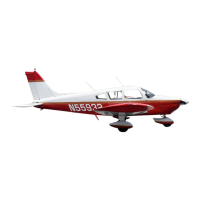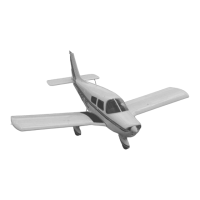SECTION
4
NORMAL
PROCEDURES
PIPER
AIRCRAFT
CORPORATION
PA-28-161,
WARRIOR
II
CAUTION
Prolonged operation
at
powers above
75%
with
a leaned mixture can result in engine damage.
While establishing Best Economy Cruise
Mixture, below
6,000 feet, care must be taken
not to remain in the range above
75%
power
more than
15
seconds while leaning. Above
6,000 feet the engine
is
incapable
of
generating
more than 75%
Always remember that the
electriC fuel pump should be turned ON
before switching tanks, and should be left on for a short period thereafter. In
order
to
keep the airplane in best lateral trim during cruising flight, the fuel
should be used alternately from each tank.
It
is
recommended that one tank
be used for one hour after takeoff, then the other tank be used for two hours;
then
return to the first tank, which will have approximately one and one half
hours
of
fuel remaining if the tanks were full at takeoff. The second tank will
contain approximately one half hour of fuel
..
Do
not run tanks completely
dry
in flight. The electric fuel pump should
be
normally
OFF
so that any
malfunction
of
the engine driven fuel pump
is
immediately apparent.
If
signs
of
fuel starvation should occur
at
any time during flight, fuel exhaustion
should
be
suspected,
at
which time the fuel selector should
be
immediately
positioned to the other tank and the electric fuel pump switched to the
ON
position.
4.29 DESCENT
NORMAL
To acheive the performance on Figure
5-31,
the power on descent must
be used. The throttle should
be
set for 2500
RPM,
mixture full rich and
maintain
an
airspeed
of
126
KIAS. In case carburetor
ice
is
encountered
apply full carburetor heat.
POWER
OFF
If
a prolonged power off descent
is
to be made, apply full carburetor
heat prior to power reduction if icing conditions are suspected. Throttle
should
be
retarded and mixture control leaned
as
required. Power response
should be verified approximately every
30
seconds by partially opening and
then closing the throttle (clearing the engine). When leveling off, enrichen
mixture, set power
as
required and select carburetor heat off
unle~s
carburetor icing conditions are suspected.
REPORT:
VB-1180
4-22
ISSUED: AUGUST 13, 1982
REVISED:
OCTOBER IS, 1982
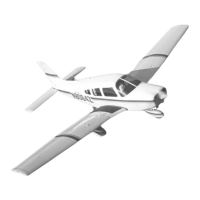
